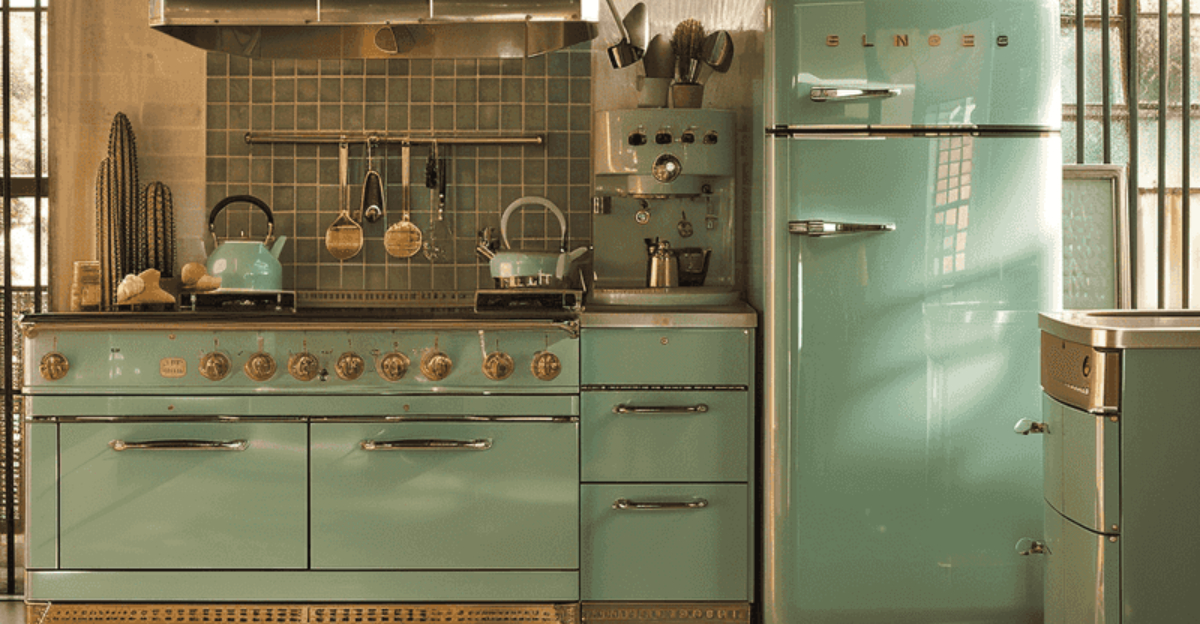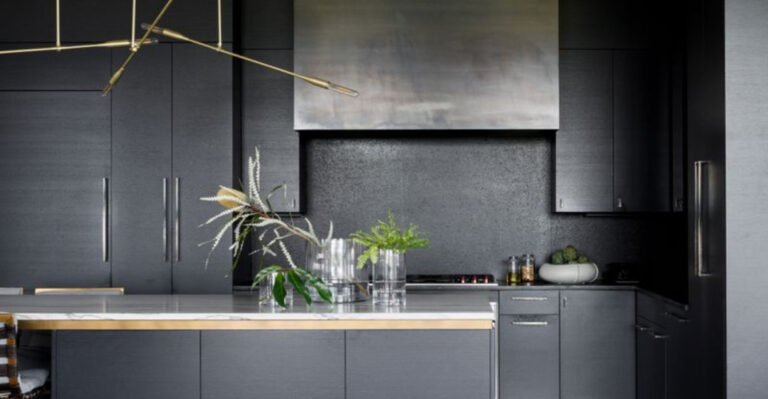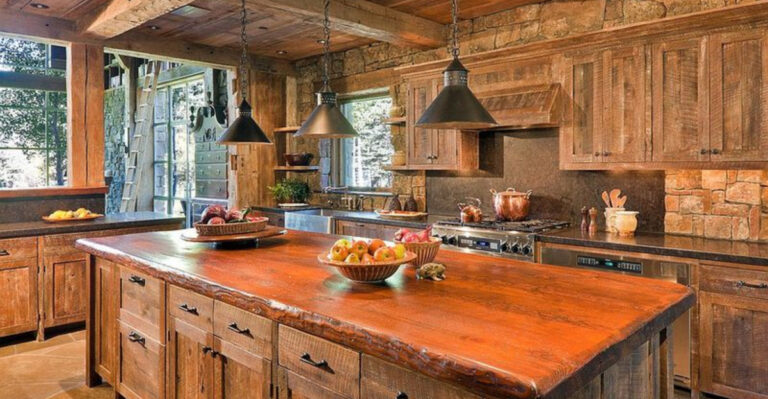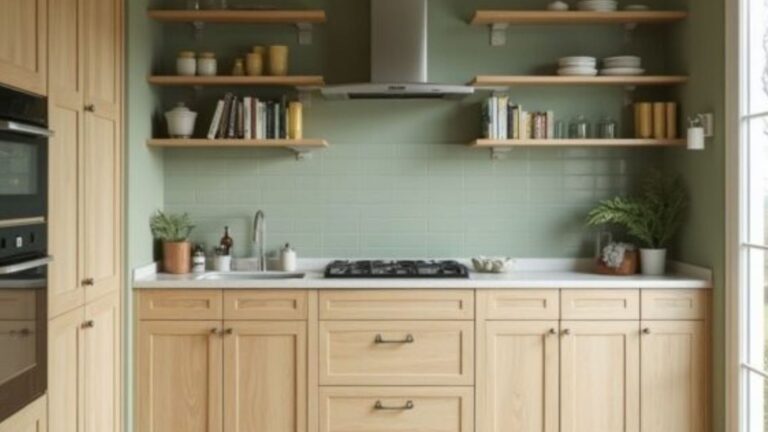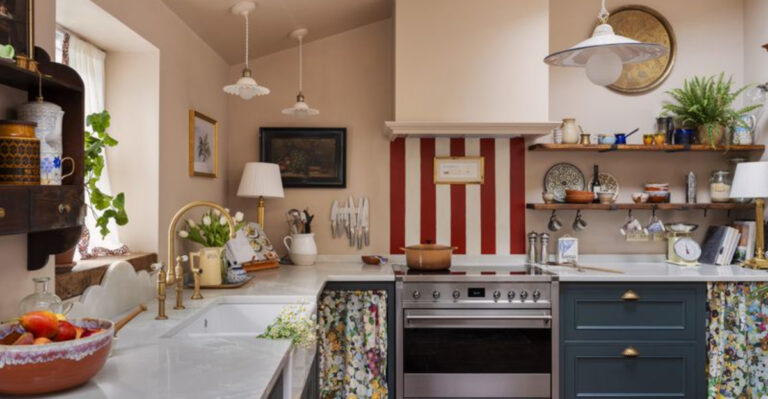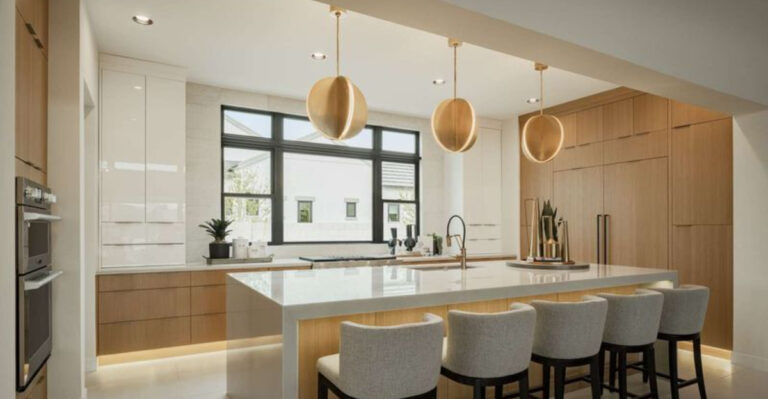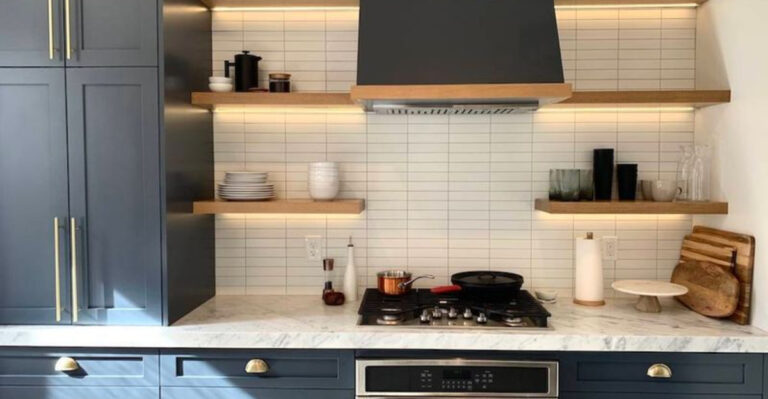15 Nostalgic Kitchen Ideas Designers Wish Would Make A Comeback Soon (Plus 5 Special Ones)
I’ll be honest, while I appreciate a sleek, modern kitchen, there’s a part of me that misses the charm of old-school design. Remember when kitchens had personality? They weren’t just spotless showpieces but places where stories were shared and every detail felt lived-in.
Today’s minimalist look might photograph well, but it often feels a little cold. Designers are feeling it too and quietly wishing for the return of those warm, nostalgic touches.
Here’s a walk down memory lane and revisit the classic kitchen features that deserve a second chance, and might just inspire your next makeover.
1. Colorful Appliances

Avocado green fridges and candy-apple red stoves once ruled American kitchens with personality galore! Those bold statement pieces gave kitchens character that today’s stainless steel army simply can’t match.
Manufacturers are slowly reintroducing colorful options, but designers crave the full rainbow palette from the 50s and 60s.
Not just any colors though – those specific, slightly muted tones that somehow made even cooking Brussels sprouts feel fun.
2. Breakfast Nooks
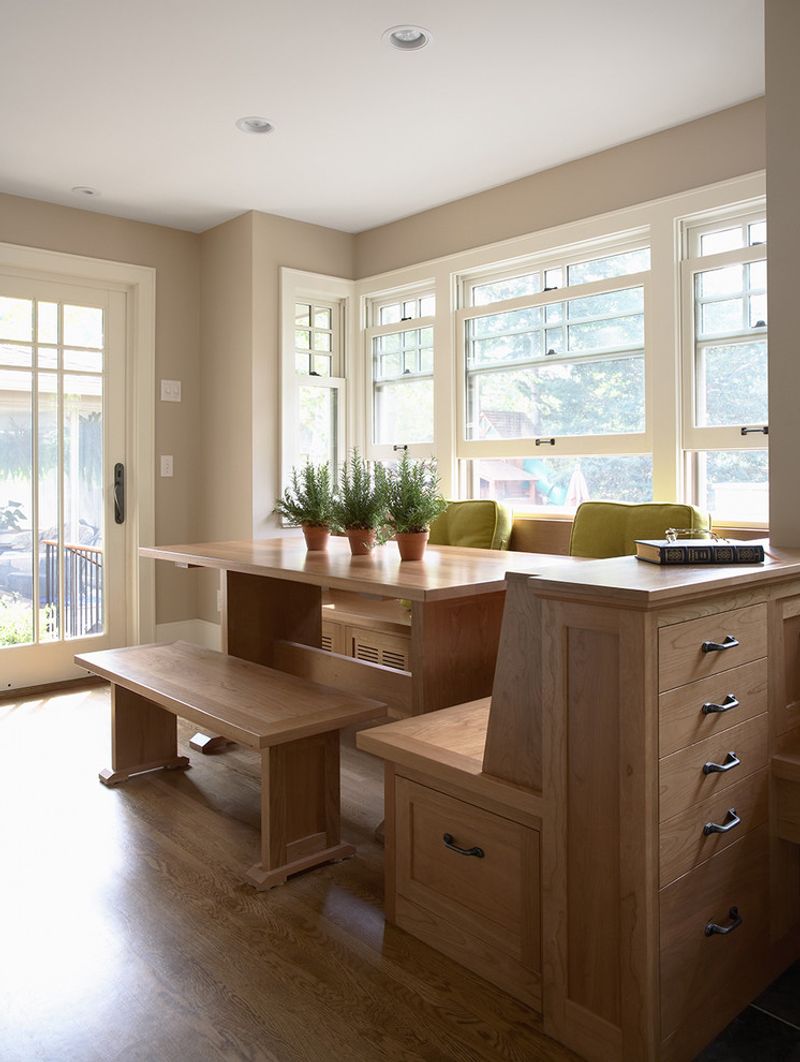
Nothing says “family time” quite like a cozy breakfast nook tucked into a kitchen corner. Those built-in bench seats with a permanent table created natural gathering spots where conversations flowed as freely as the coffee.
Modern open-concept designs often sacrifice these intimate spaces. Yet designers know that magic happens in these nooks – homework gets done, board games unfold, and midnight snacks taste better when eaten in a cushioned corner that hugs you back.
3. Farmhouse Sinks

While somewhat trending again, authentic farmhouse sinks with their deep basins and exposed fronts deserve permanent kitchen status.
Beyond their practical depth for washing Thanksgiving turkeys, these sinks have a presence that anchors the entire kitchen. Chefs appreciate how these workhorses handle everything from flower arranging to baby bathing without complaint.
The original versions were often cast iron with porcelain coating, weighing approximately as much as a small car but lasting for generations of family meals.
4. Wooden Countertops
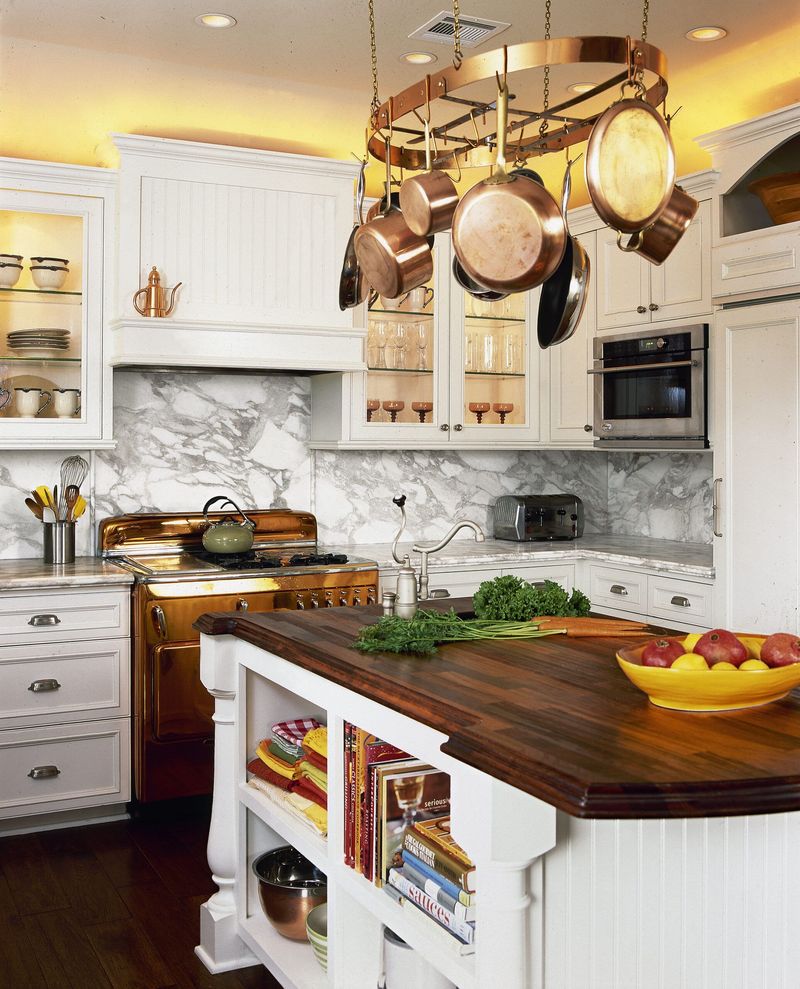
Before granite and quartz dominated every kitchen renovation show, wood countertops provided warm, functional surfaces that improved with age.
Unlike their stone counterparts, wooden counters forgave dropped dishes and told stories through their developing patina. Butcher block variations are making mini-comebacks, but designers miss full wooden countertops that wrapped throughout the kitchen.
They absorbed the sounds of busy family life, making kitchens quieter and more inviting than today’s echo chambers of hard surfaces.
5. Pastels And Retro Colors
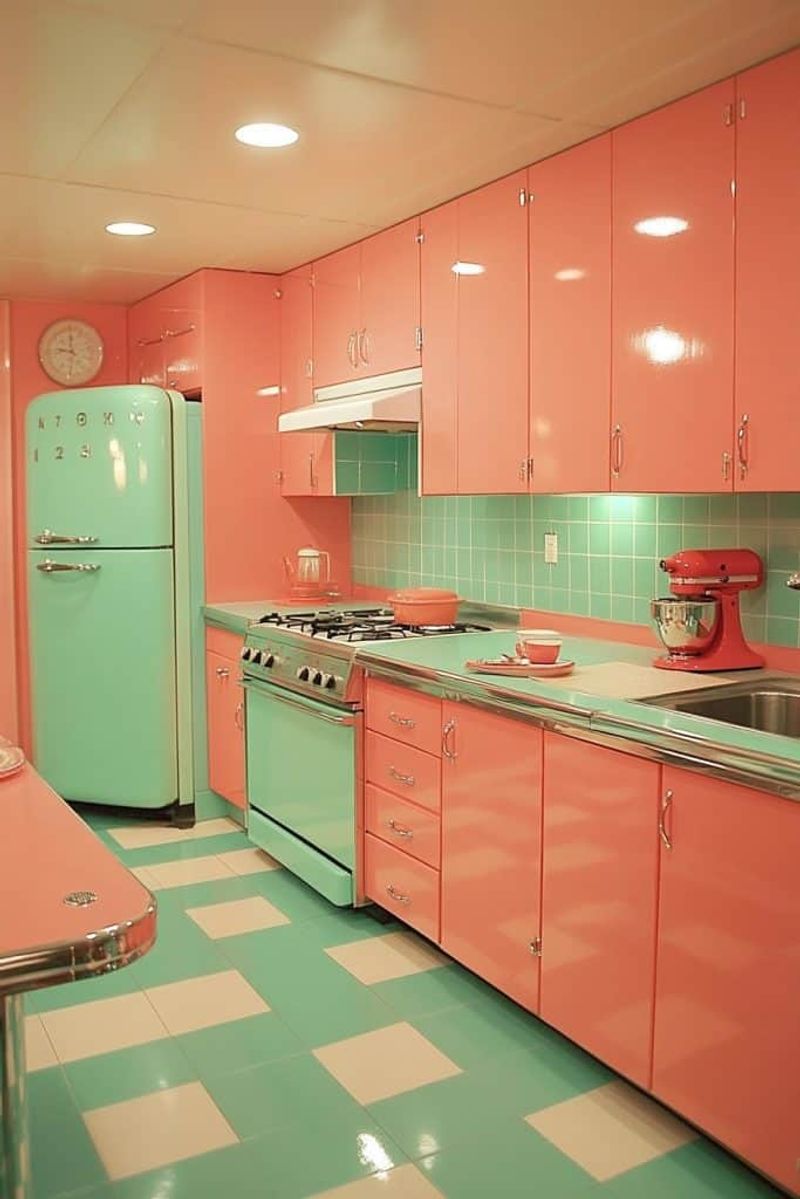
There was a time when kitchens were filled with soft, happy colors, think jadeite green, powder blue, and blush pink covering everything from cabinets to ceilings.
These weren’t just trendy shades, they created a warmth that made kitchens feel like the heart of the home. Ask anyone’s grandma, and she’ll swear dinner tasted better in a room that cheerful.
And science backs it up too, color psychology shows that these gentle hues can boost mood and bring a sense of calm. Maybe it’s time we brought that feel-good palette back, without holding back.
6. Built-In China Cabinets
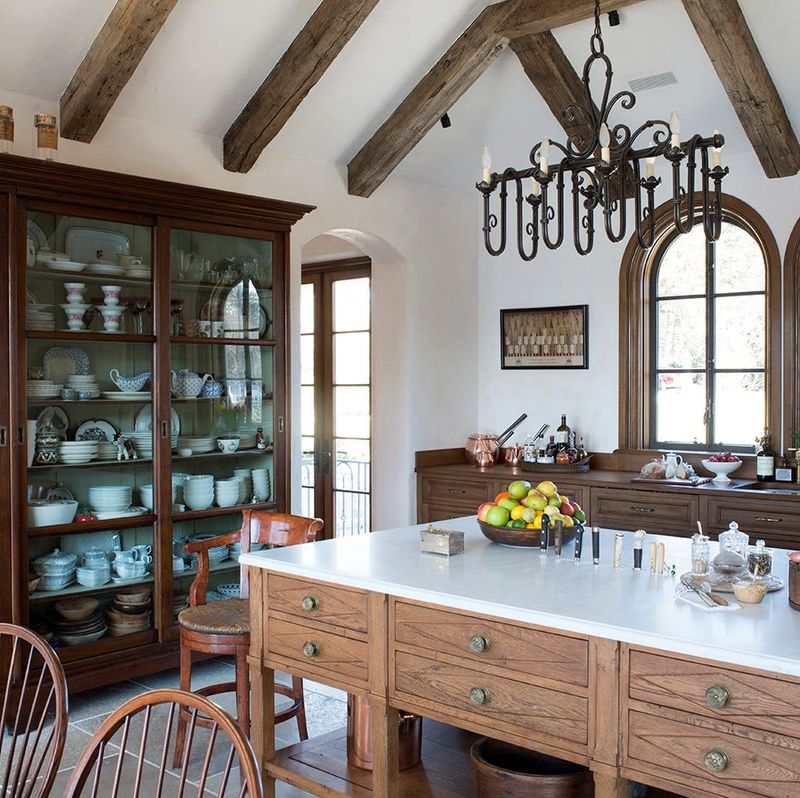
Whatever happened to displaying beautiful dishes instead of hiding them behind solid cabinet doors? Built-in china cabinets with glass fronts showcased family heirlooms and wedding gifts while keeping them dust-free and accessible.
Designers recognize these architectural features added depth and personality to kitchens. The slight formality of displayed china balanced the utilitarian aspects of cooking spaces, elevating everyday meals by keeping special occasions visible and remembered daily.
7. Dutch Doors
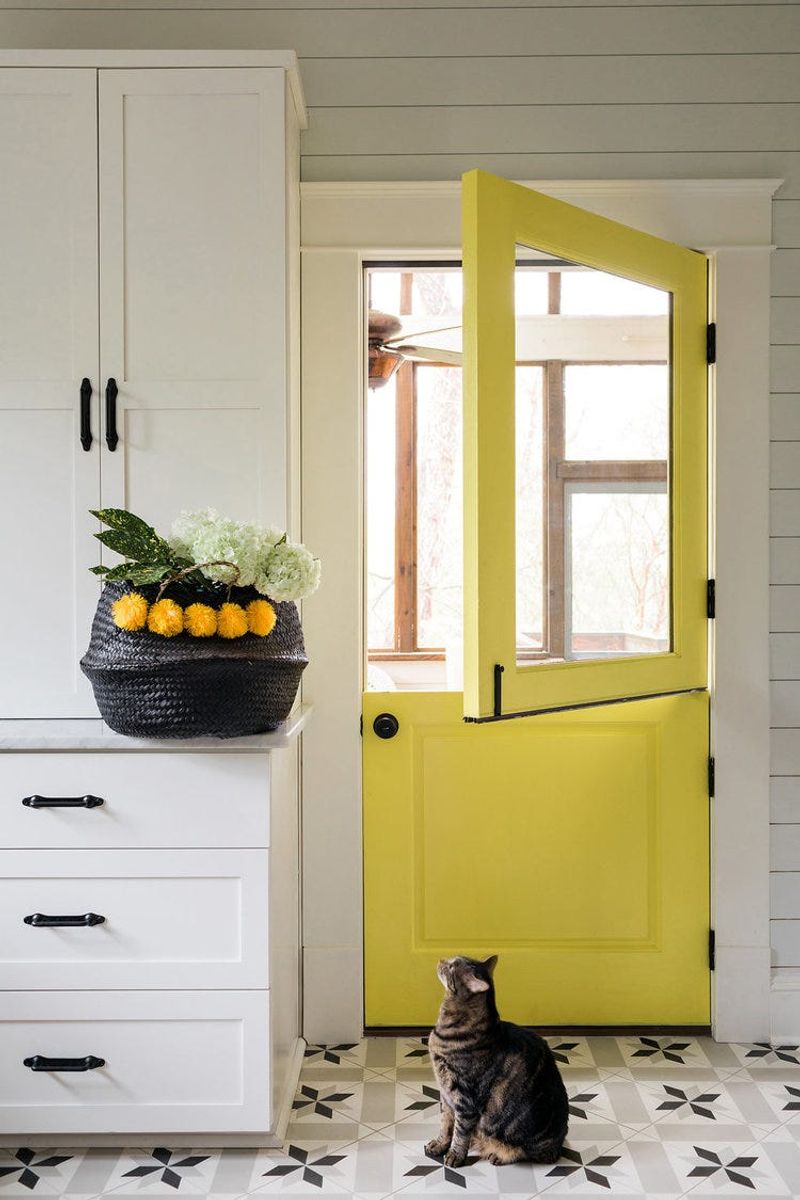
Half-open, half-closed – dutch doors were the original work-from-home solution for parents! The bottom half kept kids and pets contained while the open top allowed conversation, ventilation, and passing cookies to neighbors.
Modern designers recognize these split personalities solved problems we still have today. They connected indoor and outdoor spaces while maintaining boundaries, perfect for keeping an eye on backyard play while finishing dinner prep.
Plus, they added undeniable charm that standard doors simply can’t match.
8. Patterned Linoleum Floors
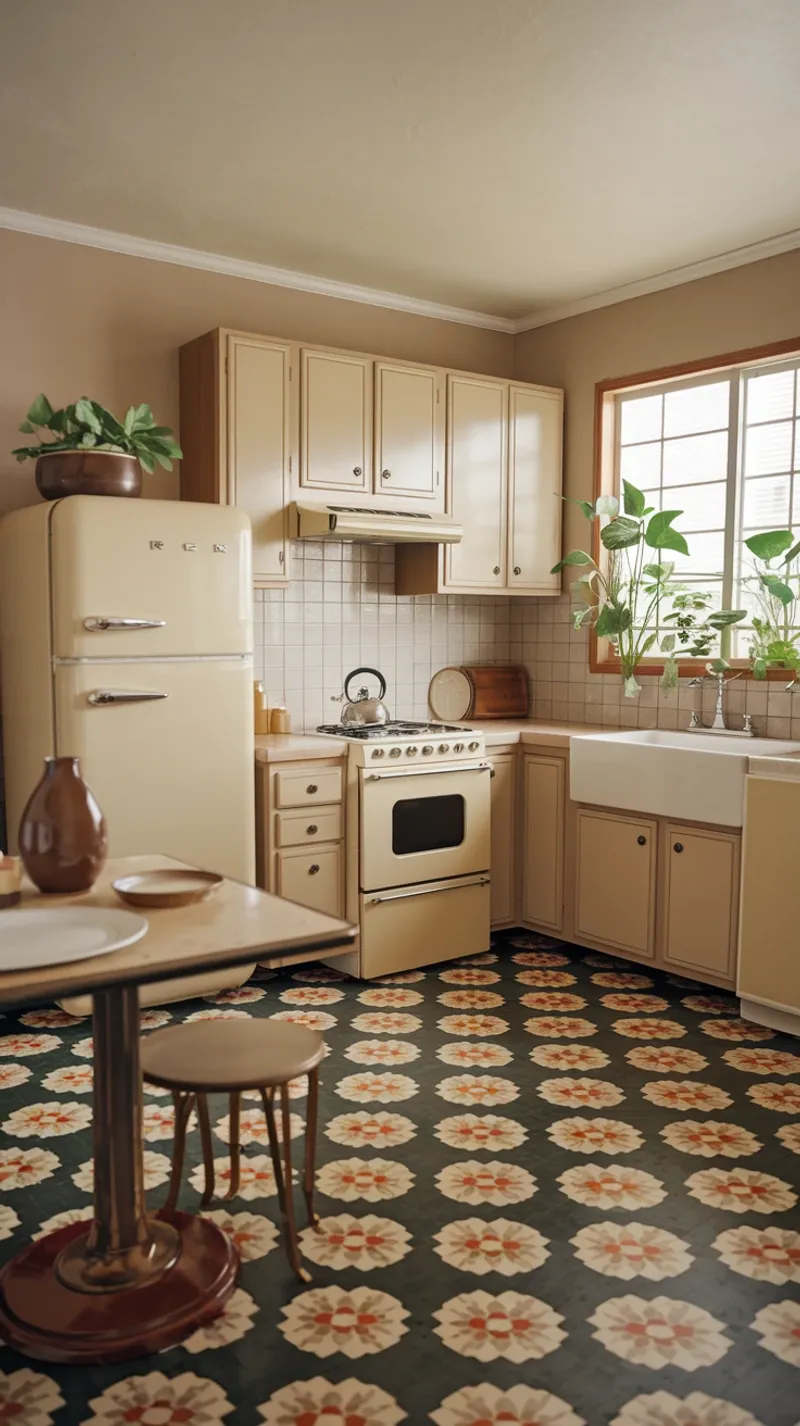
Checkerboards, florals, and geometric wonders once danced beneath our feet in kitchens nationwide. Those linoleum patterns had personality that today’s endless sea of neutral tile can only dream about.
Surprisingly durable and comfortable underfoot, these floors were practical and playful. Designers miss how they instantly established a kitchen’s character without a single piece of furniture.
Modern versions are more eco-friendly but rarely capture the distinctive charm that made grandma’s kitchen floor a genuine conversation piece.
9. Hoosier Cabinets
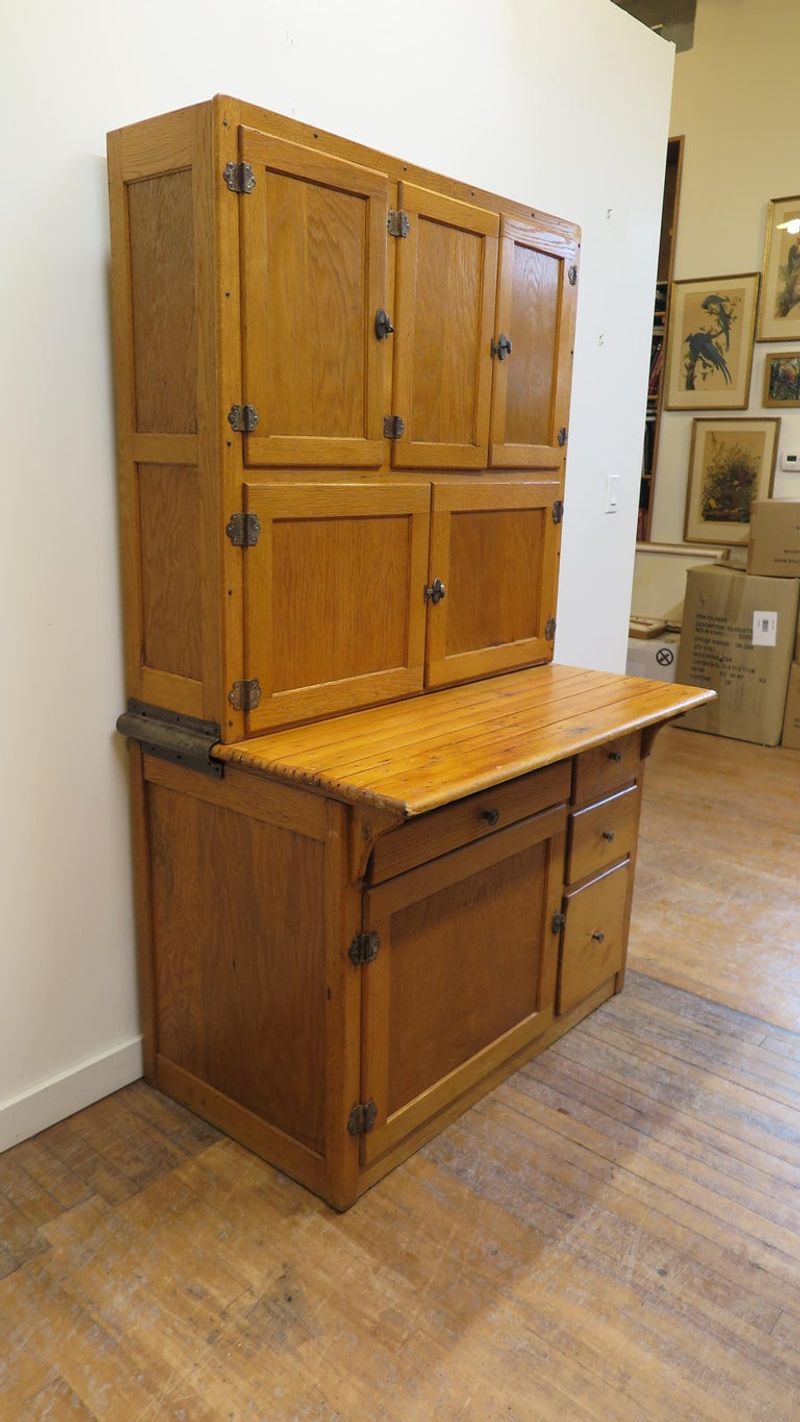
Before built-ins became standard, freestanding Hoosier cabinets served as command centers for American kitchens. These all-in-one workstations included flour sifters, spice racks, pull-out work surfaces, and storage all within arm’s reach.
Smart designers recognize their brilliance in ergonomics and efficiency. Each cabinet was a mini kitchen unto itself with specialized compartments for every cooking need.
Many modern kitchen innovations are just reinventing what these cabinets perfected a century ago – proving good design never truly goes out of style.
10. Vintage Wallpaper
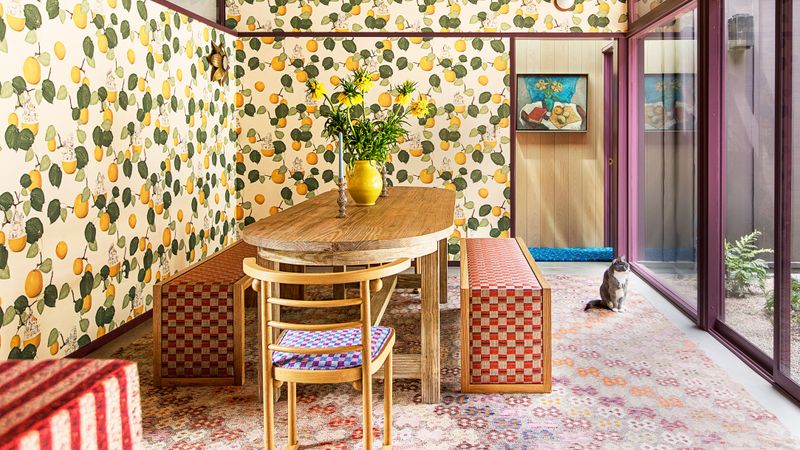
Fruit patterns, teapots, and whimsical kitchen scenes once adorned walls nationwide through vibrant wallpapers that weren’t afraid to make statements. Each roll told stories and established themes that unified kitchen designs.
Unlike today’s easily-bored approach to decor, these wallpapers were commitments to personality that lasted decades. Designers appreciate how they created instant atmosphere without additional decorations.
The patterns often featured hand-drawn elements with slight imperfections that gave them soul – something digital designs struggle to replicate.
11. Pull-Down Light Fixtures
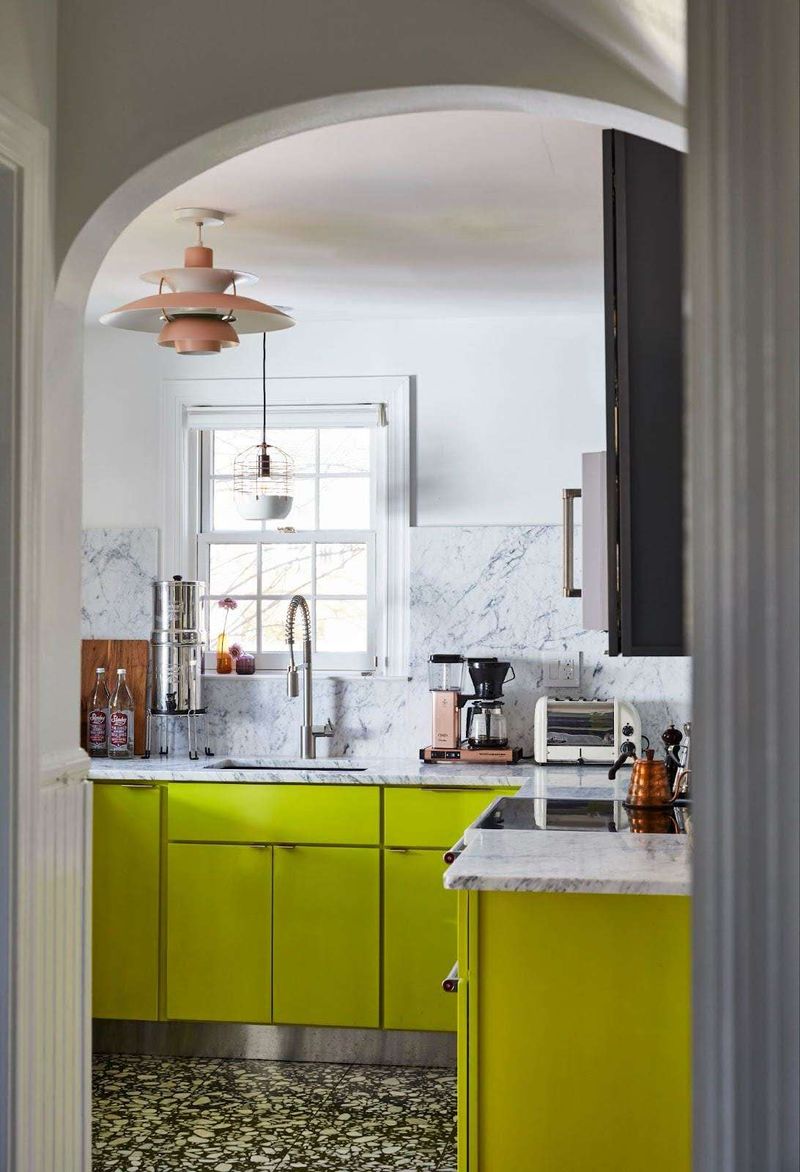
Adjustable pendant lights that could be raised or lowered with counterweights were both functional and fascinating. These ingenious fixtures provided task lighting exactly where needed, then retreated to the ceiling when the work was done.
Children loved watching parents pull these lamps down for recipe reading and homework help. Designers appreciate their perfect blend of form and function, allowing light to be precisely positioned without permanent installation decisions.
Their mechanical simplicity made repairs easy – unlike today’s disposable lighting that fails completely when one element breaks.
12. Built-In Ironing Boards
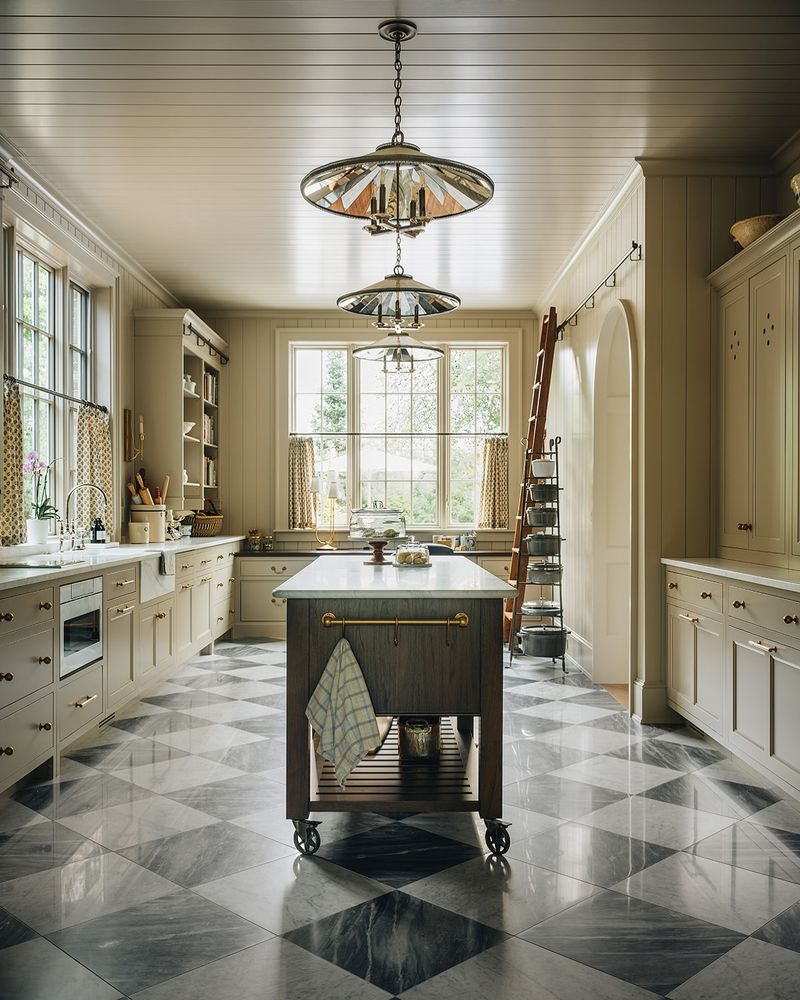
Hidden in plain sight, these wall-mounted wonders folded away into custom cabinets between uses. Multi-functional before it was trendy, kitchens once acknowledged that household tasks overlapped in clever ways.
Designers appreciate how these space-savers recognized real life happens in kitchens – not just cooking. The thoughtful engineering required minimal floor space while keeping essential tools accessible.
Modern homes with dedicated laundry rooms miss the efficiency of quick touch-ups while waiting for water to boil or cookies to bake.
13. Sunny Breakfast Rooms
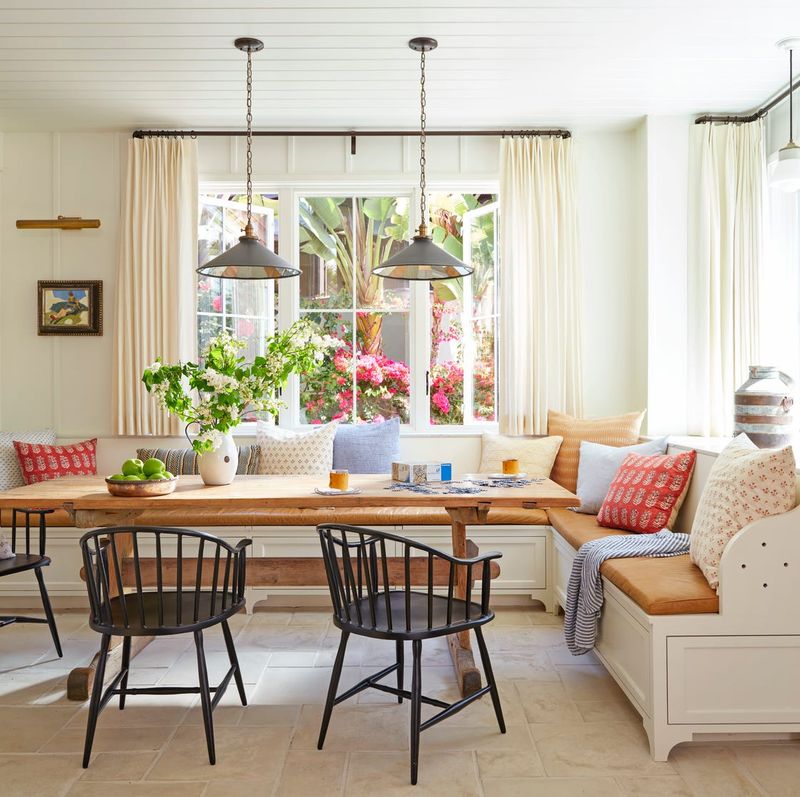
Attached garden rooms with windows on three sides once welcomed morning light for perfect breakfast ambiance. Plants thrived alongside morning coffee in these spaces designed specifically for starting the day right.
More than just eating areas, these rooms captured eastern light and warmed naturally before central heating kicked in. Designers miss how they bridged indoor and outdoor living seamlessly.
The psychological benefits of dining surrounded by natural light made breakfast the truly important meal it deserves to be.
14. Scalloped Trim And Edges

Decorative scalloped edges on shelves, range hoods, and cabinet valances added whimsical charm without major construction. These simple wood or metal accents transformed utilitarian elements into design features worth noticing.
Requiring true craftsmanship to execute properly, these details showed care in construction. Designers miss how these small touches created visual rhythm throughout kitchen spaces.
Unlike today’s interchangeable catalog looks, scalloped trim gave each kitchen a signature style that couldn’t be exactly duplicated.
15. Pantry Screen Doors
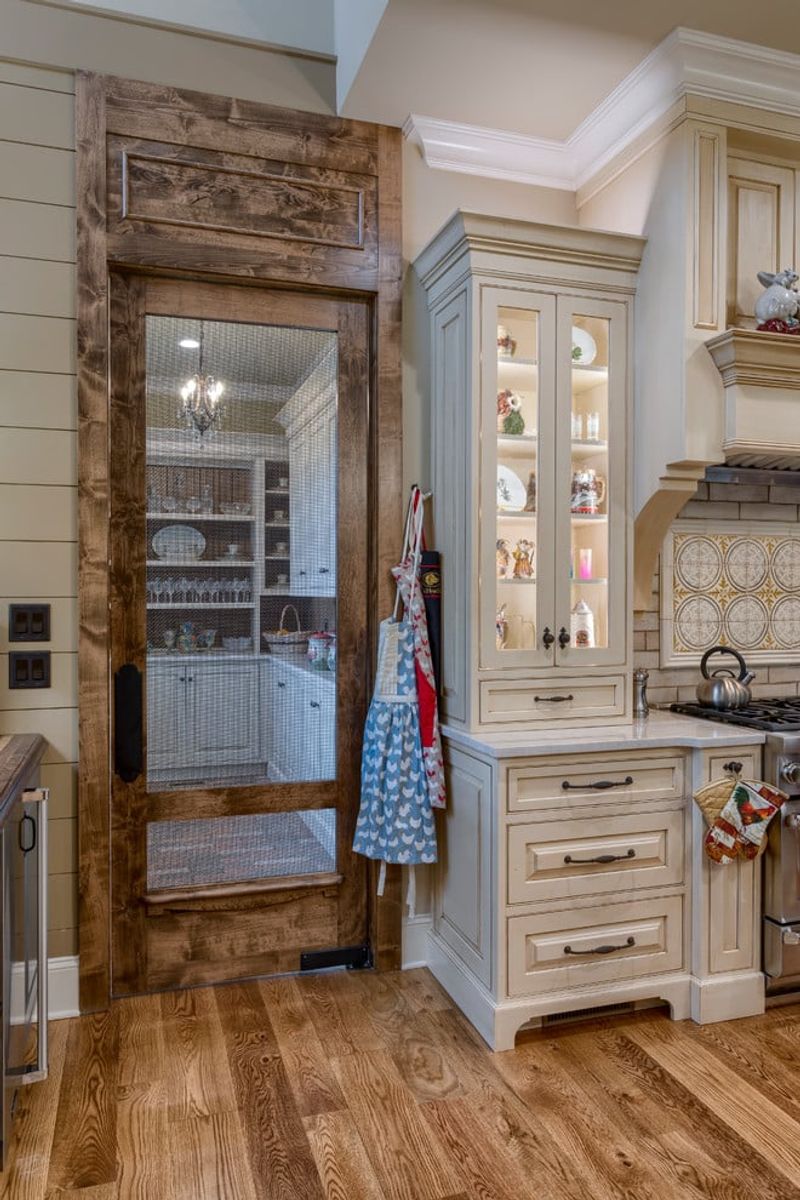
Wooden screen doors with spring hinges once marked pantry entrances with their distinctive creak and gentle slam! These practical dividers kept the air flowing while preventing unwanted critters from accessing food stores.
Beyond function, they created transition moments between kitchen and storage zones. Designers appreciate how they added architectural interest while solving ventilation problems.
The slight transparency maintained visual connection while the satisfying sound of the door closing provided auditory feedback that automatic doors have eliminated from our sensory experience.
16. Jadeite Glassware Display
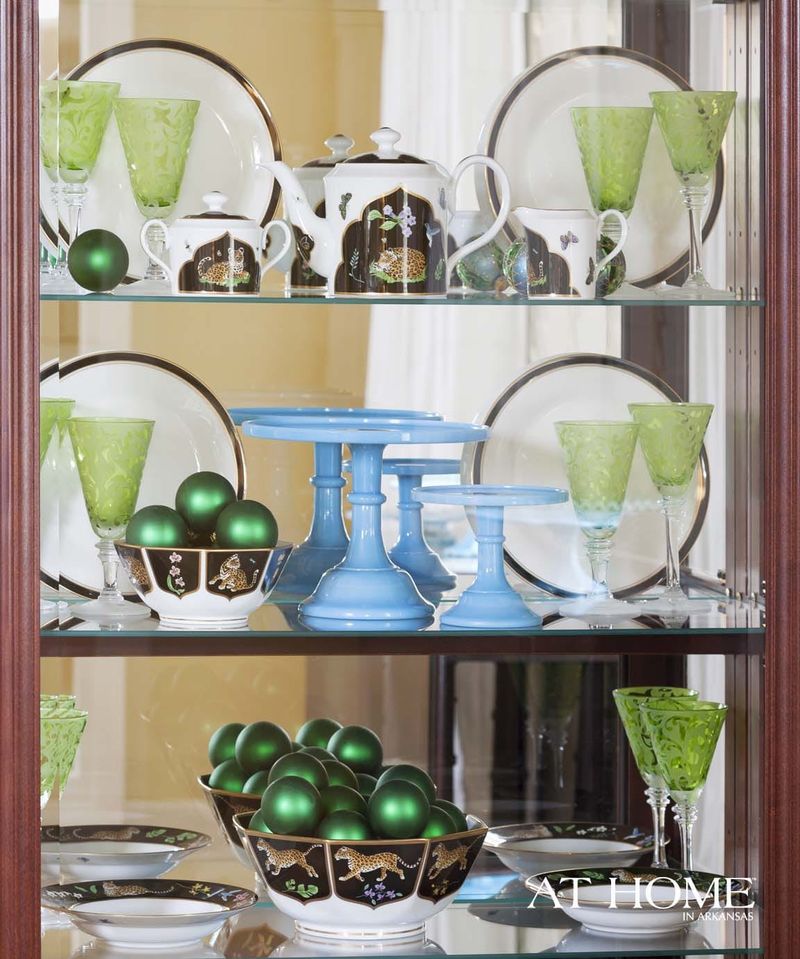
Open shelving filled with milky green jadeite dishes and measuring cups once provided functional art in countless kitchens. The distinctive color became its own design statement that unified otherwise mismatched elements.
Collectors now pay premium prices for what was once everyday dishware. Designers love how these displays proved beautiful things could also be useful, unlike today’s purely decorative shelf-fillers.
The slight variations in color between pieces showed authenticity that mass-produced matching sets lack.
17. Kitchen Libraries
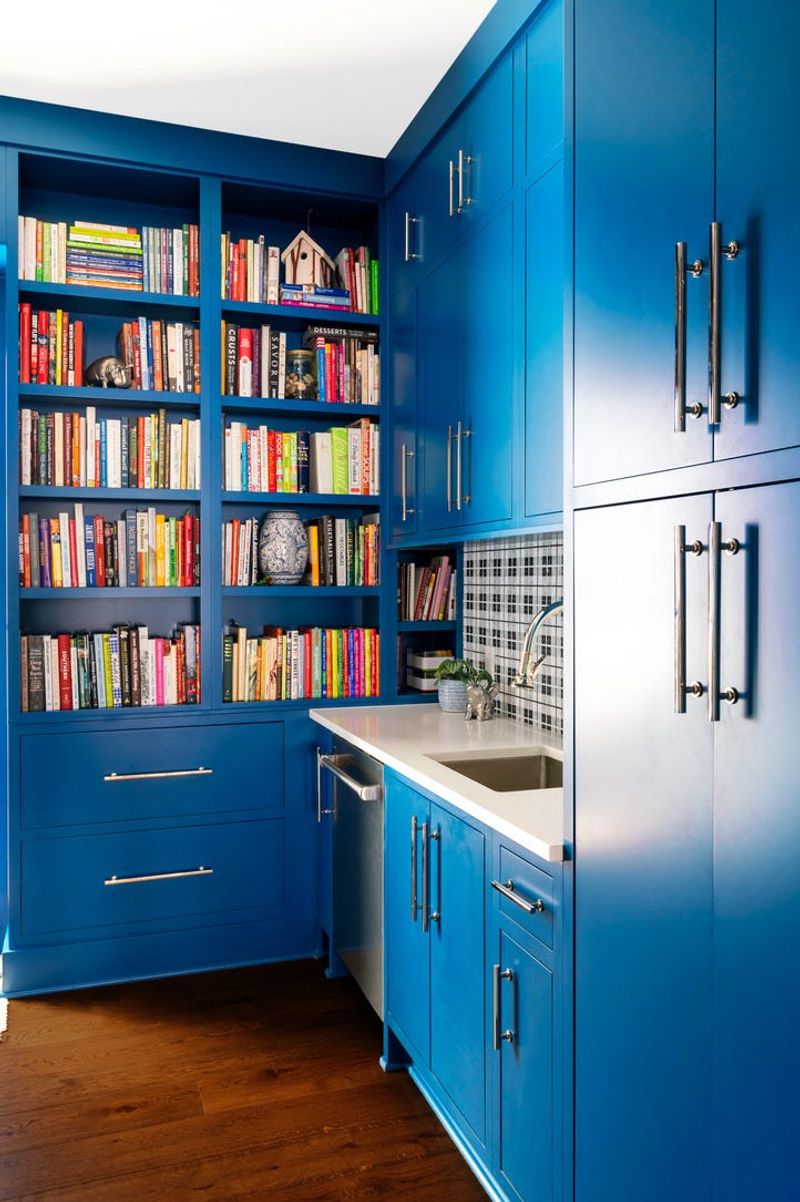
Small built-in bookshelves specifically for cookbooks once acknowledged that cooking knowledge deserved dedicated space. Often located near the main work area, these mini-libraries kept inspiration close at hand.
Stained with cooking splatters and dog-eared from use, these collections told family history through recipes. Designers appreciate how they elevated cooking to an intellectual pursuit worthy of reference materials.
Unlike today’s Pinterest-driven cooking, these physical books connected generations through handwritten notes and passed-down techniques that digital recipes simply cannot replicate.
18. Metal Bread Boxes
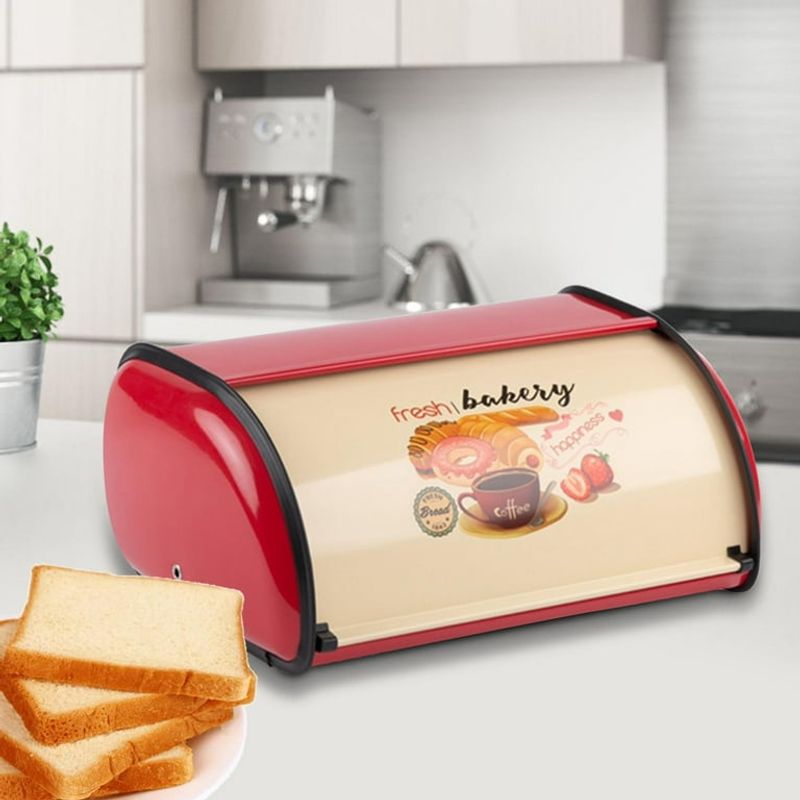
Colorful countertop bread boxes with sliding doors or flip tops kept baked goods fresh while adding personality to kitchen counters. These dedicated storage containers acknowledged bread’s importance in daily life.
Functioning as mini humidity controllers, they actually worked better than plastic bags for keeping crusty loaves perfect. Designers appreciate their honest functionality combined with cheerful presence.
The satisfying sound of opening a metal bread box signaled good things were coming – a sensory experience plastic containers fail to deliver.
19. Skirted Sink Curtains
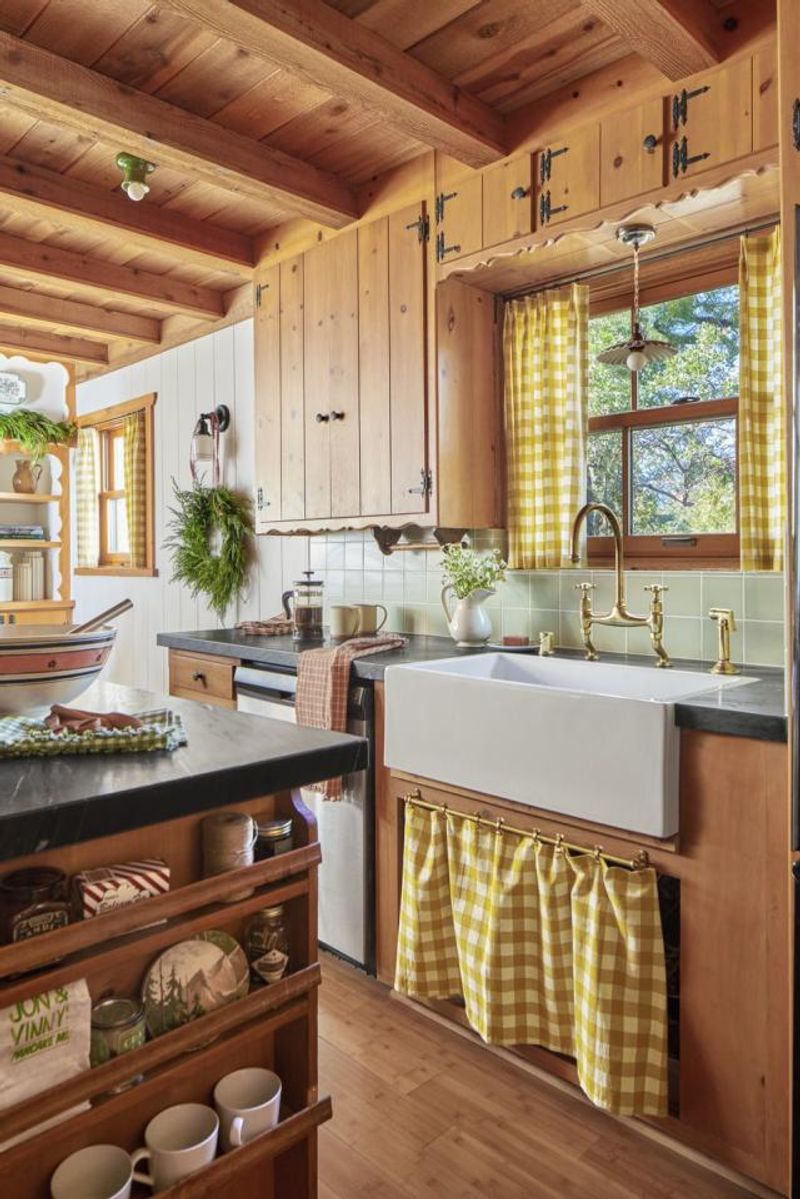
Fabric curtains concealing under-sink storage added unexpected textile softness to kitchens dominated by hard surfaces. These simple skirts introduced pattern and color while hiding cleaning supplies and plumbing.
Often made from cheerful gingham or floral prints, they could be easily changed seasonally. Designers miss how they softened kitchen acoustics and added warmth.
The slight movement when opening cabinets brought subtle animation to the room, unlike today’s static cabinet doors that remain exactly the same year after year.
20. Ceiling-Mounted Pot Racks
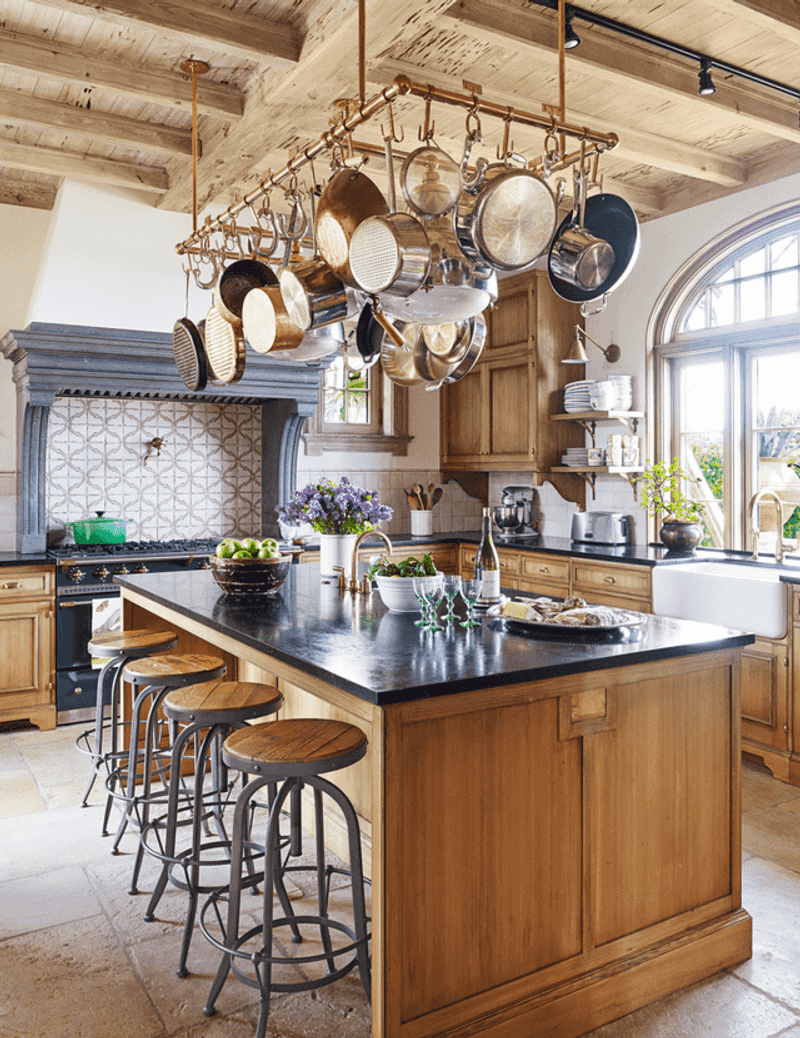
Hanging copper and cast iron cookware transformed ceilings into functional display areas in kitchens of yesterday. These practical organizers kept essential tools visible and accessible while freeing cabinet space.
The warm glow of hanging copper created ambient lighting effects no designer light fixture can duplicate. Serious cooks appreciate how they celebrate cooking tools as worthy of display rather than hiding them away.
The slight movement of pans when retrieving one created gentle kitchen wind chimes – an unexpected sensory bonus modern kitchens rarely provide.

